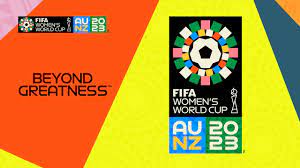By Samindra Kunti in Sydney
July 18 – Questions are being asked over FIFA’s commitment to First Nations and Maori soccer communities via the Women’s World Cup that kick off this week, with criticism that they are being used as a PR stunt without any real impact on their own football futures and wider acknowledgment of self-determination.
FIFA has used imagery and names from indigenous ‘nations’ and will roll out First Nations and Māori flags at the upcoming Women’s World Cup “to reflect FIFA’s commitment to the Indigenous peoples of the tournament’s co-hosts”.
But the local communities are saying this isn’t enough.
On March 17, the Australian Indigenous Football Council (AIFC) addressed a letter to FIFA, Gianni Infantino, and outgoing secretary-general Fatma Samoura urging FIFA to uphold its commitment to human rights by granting self-determination and control over their soccer destiny to first nations bodies.
They argue that FIFA, as stipulated in Article 3 of the FIFA Statutes, has an obligation to uphold all internationally recognised human rights, including the 2007 Declaration on the Rights of Indigenous Peoples.
Neither FIFA nor Football Australia replied to the letter. Both organizations have a track record of ignoring human rights or the rights of minorities.
“We don’t want to have to go to Football Australia and go – ‘Oh, please, can we can we play against the New Zealand Maori?’ says Lawrence Gilbert, the chairman of the AIFC.
“We own the Australian teams built from the indigenous communities from the bottom-up and we’ll continue to self-determine our own footballing future.”
The AIFC and Maori Aotearoa Football (MAF) are advocating for self-determination, adequate funding, grassroots programs, and potentially organising an indigenous World Cup. Unfortunately, their efforts have only resulted in the use of Aboriginal and Maori imagery as a superficial component of FIFA’s PR campaign for the World Cup branding.
“I call it Indigenous procurement. Not one cent is put towards a legacy towards the Indigenous communities,” says Gilbert. “All they want is for Aboriginal people to do a bit of dancing and then say ‘Aloha’.”
FIFA does not have a liaison officer to engage with indigenous people. Football Australia’s executive board has an entirely white outlook, but last year the governing body launched a National Indigenous Advisory Board, which includes professor John Maynard and the first Aboriginal Matilda Karen Menzies. However, the board does not have the resources to act.
The First Nations people, comprising approximately 3% of the population, represent the oldest living culture on Earth with a history spanning 65,000 years. However, Aboriginals and Torres Strait Islanders continue to experience alienation within Australian society, even after enduring decades of harsh government policies.
“Football in Australia is in the same position as the country,” explains former player and human rights activist Craig Foster.
“It’s being asked by First Nations people through the referendum to provide autonomy and self-determination. We’re seeing an immense amount of racism come out because of this referendum, you know, where people who are, you know, set against First Nations people having their basic rights or even recognition. And these two organizations are asking FIFA for the same thing. That’s why it’s a perfect time to have a conversation, including with FIFA, about what the future of Indigenous football looks like here and around the world.”
Contact the writer of this story at moc.l1751499256labto1751499256ofdlr1751499256owedi1751499256sni@i1751499256tnuk.1751499256ardni1751499256mas1751499256

